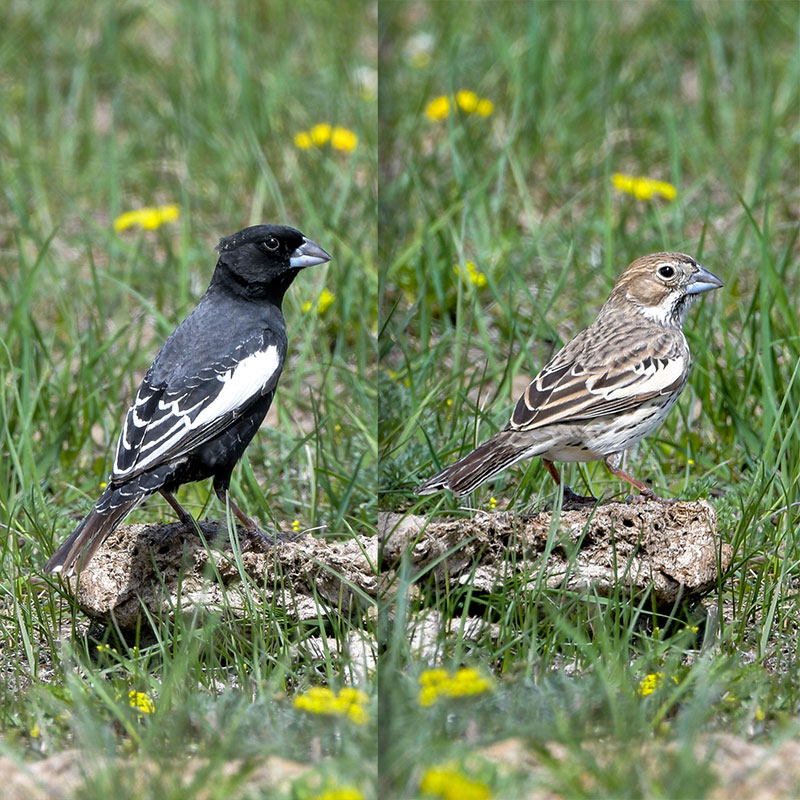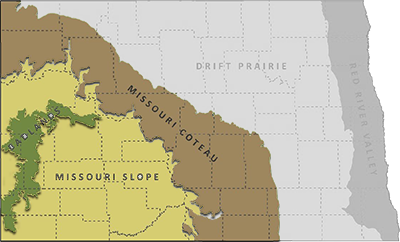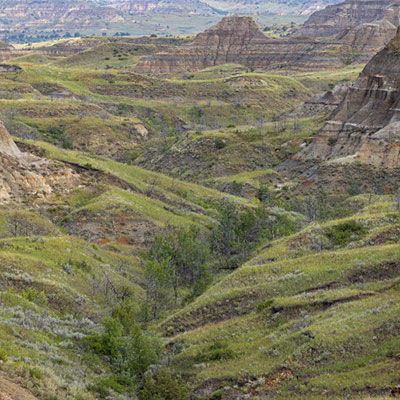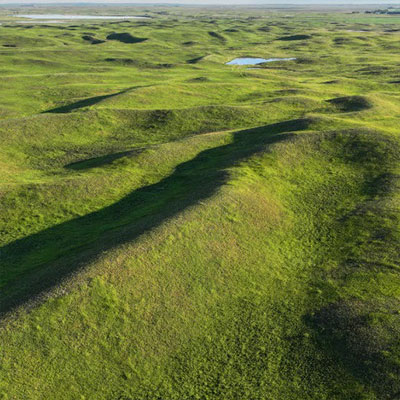Lark Bunting

NDGF
L 7”, WS 10.5”, 1.3 oz. Males all black except for broad patches of white on wings and tips of the tail. Females are graybrown with dark streaks on a white breast.
Status in North Dakota
Occurs in North Dakota from early May to early September. Peak breeding season late May to early August.
Reason for SWAP Designation
Regionally and globally imperiled, ND range important (SGCN a., b.).
ND ranks 6th out of 10 states for highest percent of the global population (3.78%) during the breeding season (eBird).
The Lark Bunting is declining precipitously, and the population has decreased 86% since 1970.
Threats
Loss of grassland and sagebrush.
Degradation of grasslands from invasive plants, woody encroachment, succession, and loss of diversity.
Loss of ranching heritage and grass-based operations, grazing is essential to grassland health and diversity.
Increasing applications of agrochemicals and possible exposure causing pesticide acute toxicity.
Research and Monitoring
Habitat requirements are generally known but the effects of management practices such as grazing, burning and haying have not been broadly researched on the breeding grounds.
Little is known about reproductive success, annual adult survival, or fledgling survival.
Additional information is needed on migration and wintering behaviors.
The Breeding Bird Survey, eBird and Partners in Flight Databases are key sources of information on distribution and population trends.
Management Recommendations
- Protect and conserve large, intact tracks of native prairie/unbroken grassland and sagebrush.
- Reconstruct or restore grassland adjacent to existing tracts of native prairie/unbroken grassland.
- Use native grasses when replanting or restoring grassland and incorporate native shrubs.
- Promote well-managed grazing lands and working grasslands for biodiversity, sustainability, and resiliency.
- Prevent tall woody vegetation in grasslands, either mechanically or by prescribed fire, but do not remove the shrub component (sagebrush, rabbitbrush).
- Delay mowing or haying until August 1.
- Install wildlife escape ladders in stock tanks.
- Conscientious and appropriate application of agrochemicals.
- Follow beneficial or best practices during the design, siting, construction, operation, and maintenance of tall structures (e.g. transmission lines, communication towers, wind turbines).




